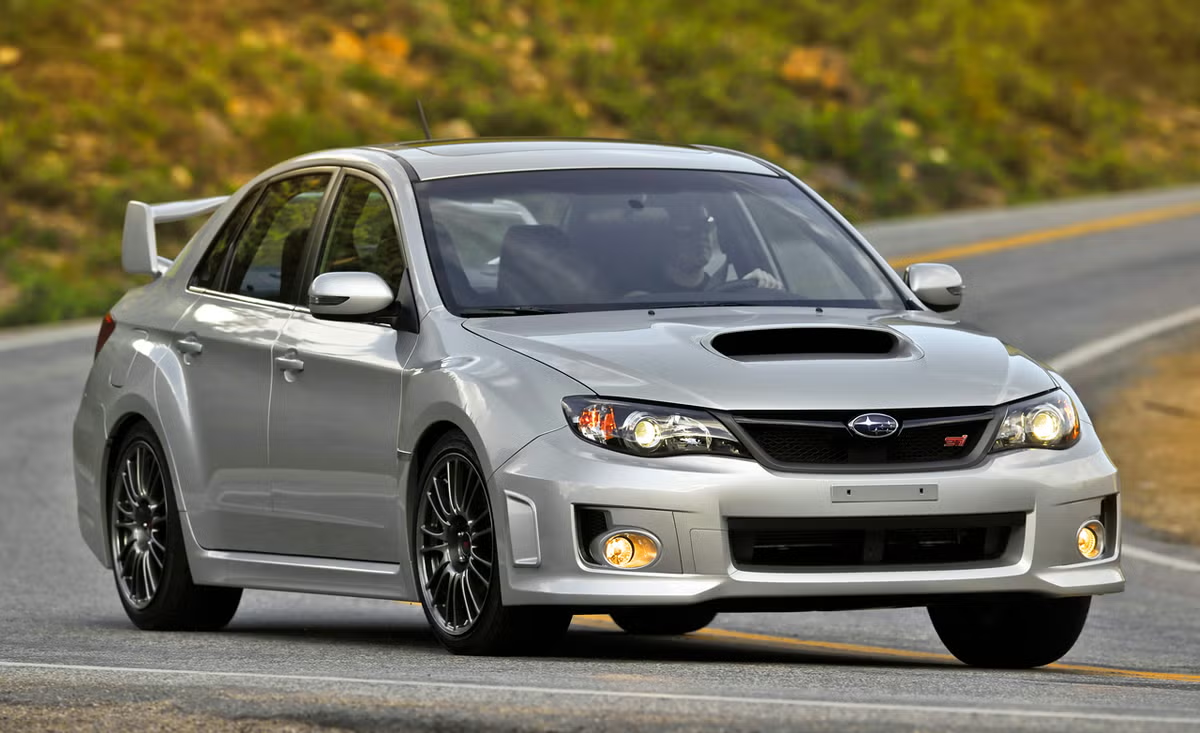Driving enthusiasts haven’t always embraced the growing popularity of SUVs. This vehicle type tends to emphasize practicality over driving enjoyment, and while it may appear sporty, as the acronym suggests, it doesn’t inherently offer high-performance dynamics.
Despite these concerns, the surge in SUV demand brings several advantages, one of which is a wide array of options for drivers in need of a spacious car.
Virtually every mainstream automaker now produces smaller SUVs and crossovers, making it unnecessary to purchase a larger vehicle to accommodate passengers and cargo.
In fact, some of the more compact SUVs and crossovers can provide cargo capacity comparable to much larger sedans, and certain modern hatchbacks are even competitive in this area.
These 12 SUVs, crossovers, and hatchbacks span a wide range of manufacturers and price points, yet each offers over 20 cubic feet of cargo space within a compact overall design.
1. Mazda Mazda3 — 20.1 cubic feet
The Mazda3 stands out with its impressive trunk space for its size, making it a hatchback ideal for drivers who need more practicality than a Miata while still enjoying an engaging driving experience.
In 2023, SlashGear tested the latest generation of the Mazda3 and awarded it high praise, highlighting its excellent interior quality, ample power, and enjoyable handling as standout features. The car is also offered with a manual transmission, though only in select configurations.
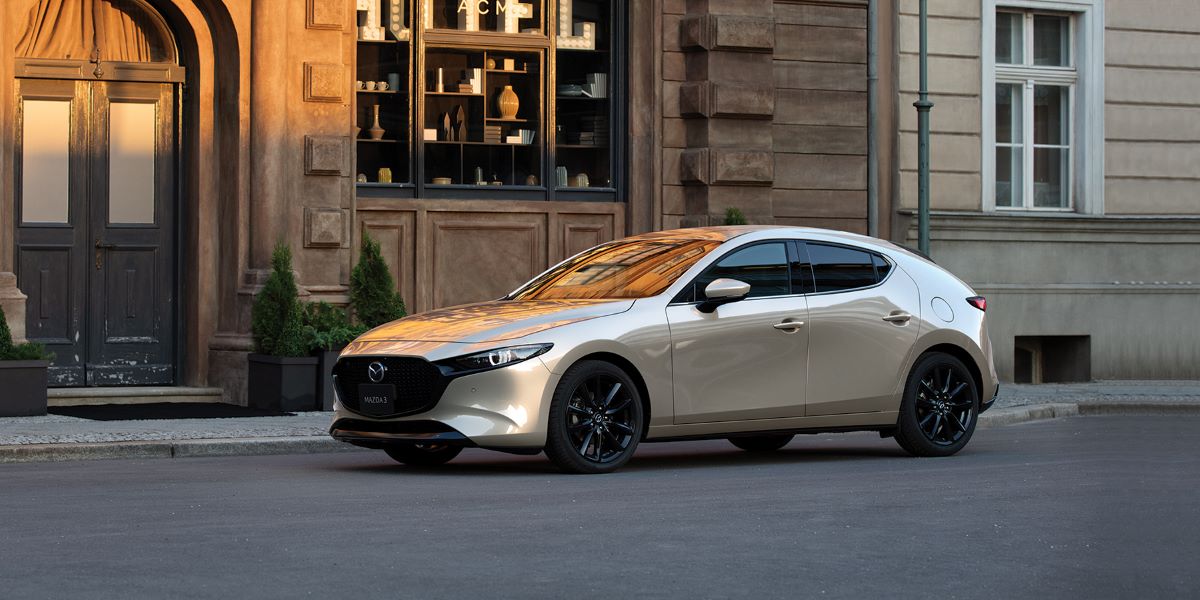
Not only is the Mazda3 comfortable and fun to drive, but it also provides a competitively spacious interior. With all seats in place, the car offers 20.1 cubic feet of trunk space.
Additionally, the rear seats fold down, increasing the cargo capacity to accommodate larger or bulkier items. When the seats are up, rear-seat passengers will find the headroom ample enough for adults, ensuring they don’t feel cramped.
While the Mazda3 may not have the largest cargo space in its class, its other strengths make it a great value for the price.
The Mazda 3 remains one of our top picks among compact cars, and its optional all-wheel drive stands out as a rarity in this class. While four driven wheels are standard with the most powerful engine—a turbocharged 2.5-liter—Mazda also offers all-wheel drive with its naturally aspirated base engine.
For the 2025 model year, the most affordable path to all-wheel drive in a Mazda 3 is through the Carbon Edition sedan, priced at $30,795. That’s $1,150 less than the Carbon Edition hatchback and significantly cheaper than the Turbo variants, which include the $33,485 Carbon Turbo sedan and the $37,185 Turbo Premium Plus.
Still, with a price just north of $30,000, the Mazda 3 Carbon Edition sedan commands more than its two primary all-wheel-drive competitors in the segment—the Toyota Corolla Hybrid, which starts at $26,360 in LE trim and climbs to $28,800 as an SE, and the Subaru Impreza, ranging from $24,780 up to $29,670 for the RS.
That higher cost is partly justified by the Carbon Edition being the top trim for Mazda 3 sedans equipped with the base engine.
It includes a generous list of standard features such as wireless smartphone mirroring, an eight-speaker audio system, adaptive cruise control, blind-spot monitoring, a sunroof, heated front seats, and a power-adjustable driver’s seat.
One caveat: it’s only available in Polymetal Gray Metallic. Fortunately, the monochrome exterior is accented with black wheels and trim, while the cabin features striking red leather upholstery.
2. Subaru Impreza — 20.4 cubic feet
The Subaru Impreza offers slightly more trunk space than the Mazda3, with a total of 20.4 cubic feet behind the rear row. Like the Mazda, the Impreza is an affordable option that provides a fair amount of driving enjoyment for its price.
In SlashGear’s test of the 2023 model, the vehicle was in the RS trim, which includes a 182-horsepower 2.5L four-cylinder engine and several additional safety and tech features compared to the base trim.

Cargo capacity remains consistent across all Impreza trims, and the amount of space available when the rear seats are folded down is also the same. When the seats are lowered, the Impreza offers 56 cubic feet of cargo space.
Similar to the Mazda3, the rear seats in the Impreza fold flat in a 60/40 configuration, providing extra flexibility for drivers who need to prioritize either cargo, passengers, or a combination of both.
3. Nissan Leaf — 23.6 cubic feet
The Nissan Leaf continues to be one of the most budget-friendly electric vehicles available, with starting prices hovering around the $30,000 mark.
That said, there are a few trade-offs that may deter potential buyers. Chief among them is the entry-level Leaf’s limited range of 149 miles, which falls significantly short when compared to most contemporary EVs.
For those willing to spend more, the higher-tier Leaf SV Plus offers an improved range of 212 miles still not class-leading, but a more reasonable figure given its price point.

Cargo capacity, however, is not something 2025 Leaf owners need to be concerned about. The model provides 23.6 cubic feet of storage space, which is impressive considering the vehicle’s compact dimensions.
In general, the interior space is competitive for both passengers and cargo. Whether this remains the case for future Leaf models is uncertain.
Nissan has confirmed it is developing a new generation of the Leaf that will feature a significantly longer range, though the company has yet to reveal when that updated version will make its debut.
A true pioneer in the world of electric vehicles, the Nissan Leaf made its debut in 2010 and quickly rose to prominence, becoming the best-selling EV globally for several years—outpacing rivals like Tesla, at least for a time. Since its launch, more than 645,000 Leafs have been sold worldwide, solidifying its place in automotive history.
The second-generation Leaf arrived in 2017, carrying forward the legacy of the original but entering a market flooded with competition and dominated by SUVs.
As a result, its popularity has declined over time. A next-generation model is on the horizon, and it’s expected to ditch the hatchback shape to align more closely with SUV trends. Nissan’s Ariya crossover will be ready to welcome the newcomer when it arrives.
Is it a hall-of-famer? Absolutely. The original Leaf built a passionate base of loyal customers who appreciated its low running costs, the ease of home charging, quiet operation, and straightforward practicality.
They admired that, despite being an EV, it still functioned like a regular car: five seats, decent cargo space, user-friendly handling, and an accessible price. It had none of the gimmicks—“None of this fart mode nonsense”—that some rivals pushed. It proved to the industry that electric cars could be viable for everyday people.
Still, the first-gen Leaf wasn’t perfect. Even as it led in sales, it lagged behind in performance and range, especially when compared to attention-grabbing Teslas. Its unconventional styling didn’t appeal to everyone, and as the industry advanced with better connectivity and driver assistance features, the Leaf began to feel outdated.
That’s where the second generation stepped in, aiming to address those shortcomings. The updated Leaf promised improved performance, extended range, sharper design, and enhanced technology—all while offering better value across its model lineup.
So, what’s under the skin of this newer version? While the standard Leaf retains the same motor as its predecessor, it benefits from a more robust inverter—responsible for controlling and delivering power throughout the vehicle. This results in a significant power boost, with output reaching 148bhp and a 0–62mph time of 7.9 seconds.
In 2019, Nissan added the high-end e+ variant, featuring a 62kWh battery and a punchier 214bhp motor, still powering the front wheels, and offering an extended driving range of 239 miles.
However, that version has since been discontinued. The only option now is the 39kWh model, delivering a modest 168-mile range—hardly competitive by current standards and a sign that the once-revered Leaf has been outpaced and overshadowed.
What about pricing? The Leaf starts at £28,495, making it one of the few EVs still priced under £30,000. It comes in four trim levels, with the most expensive version just shy of £32,000.
How does it stack up against rivals? The MG4 offers a similar size and price point but comes with a larger battery, making it a more compelling and practical choice. Other affordable electric alternatives include the Vauxhall Corsa Electric, Peugeot e-208, and Fiat 500e, though calling any of them truly “cheap” is debatable in today’s EV market.
Also Read: 5 Cars With the Best Factory Paint and 5 That Peel Fast
4. Audi Q3 — 23.7 cubic feet
The second-generation Audi Q3 made its debut in 2018, and even though it’s now one of the oldest crossovers in its segment, it continues to hold its own against newer competitors.
That includes when it comes to cargo space, offering 23.7 cubic feet, which places it solidly in the middle of the pack compared to its rivals.
While Audi sells a smaller crossover, the Q2, in other regions, the Q3 remains the most compact SUV in the brand’s North American lineup.

For the 2025 model year, Audi provides only one powertrain option for the Q3: a turbocharged 2.0L four-cylinder engine producing 228 horsepower.
This setup allows the vehicle to go from 0 to 60 mph in 7.3 seconds an unremarkable figure by today’s electrified standards. Still, the Q3 makes up for it in other areas.
Its design remains appealing despite its age, and its $40,000 starting price makes it a more accessible entry point into the Audi SUV range when compared to the brand’s larger and more powerful offerings.
5. Toyota Prius — 23.8 cubic feet
It’s fair to say that cargo space isn’t the primary reason buyers are drawn to the Toyota Prius. Instead, it’s the model’s fuel efficiency, its longstanding reputation for reliability, and somewhat unexpectedly its aesthetics that now play a role.
While earlier generations of the Prius were often criticized for their looks, the latest version, introduced for the 2023 model year, features a much more refined and modern design. Importantly, it maintains all of the Prius’s core strengths, including better driving performance than before.
That said, SlashGear pointed out some drawbacks with the newest Prius, such as its somewhat confusing dashboard layout and the noticeable engine noise during hard acceleration.
Aside from those issues, there were few significant flaws. The Prius still delivers on practicality and efficiency, although the latter takes a small hit due to the 23.8 cubic feet of trunk space slightly less than what was available in the previous generation of the vehicle.
Once the subject of ridicule for its association with tree huggers and its quirky, science experiment-like design, the Toyota Prius has undergone a remarkable transformation.
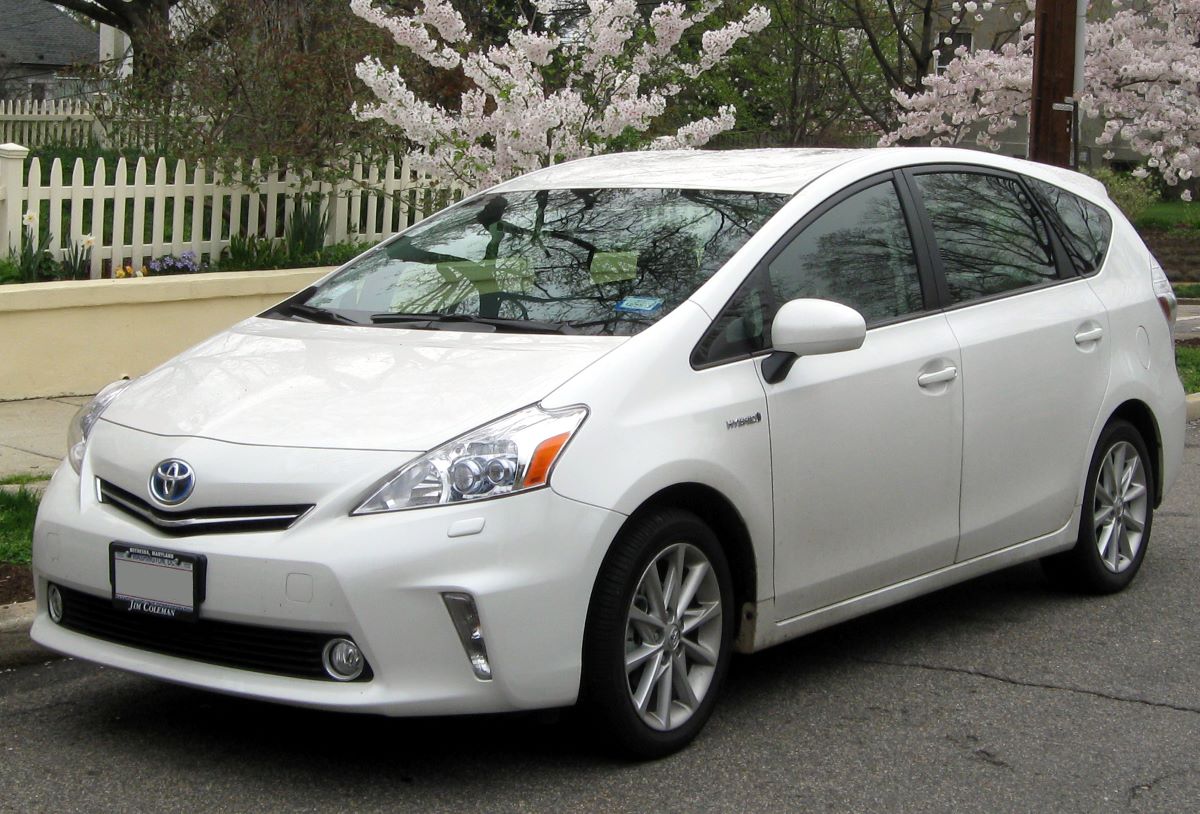
Now featuring swan-like styling and an unexpectedly engaging driving experience, the Prius has shed its awkward reputation. Yet it still holds firmly to its legacy of exceptional fuel efficiency, as clearly demonstrated by its impressive EPA-estimated fuel economy figures.
The redesigned 2023 model showcases sleek, modern aesthetics and comes equipped with either a 194-hp front-wheel-drive or a 196-hp all-wheel-drive powertrain. Both configurations deliver acceleration that feels spirited rather than sluggish. As for those fuel economy numbers? They peak at an outstanding 57 mpg combined.
In addition, Toyota offers the Prius PHEV—formerly known as the Prius Prime—which delivers slightly more power and can run purely on electric power for an estimated 40 to 45 miles. That version is covered in a separate review.
Inside, the new Prius features a more conventional layout, moving away from some of the eccentric elements of previous generations—like the centrally mounted gauge cluster
. A variety of comfort and convenience features are now available, enhancing the overall experience. The bottom line? Choosing a Prius today involves little to no compromise.
6. Acura Integra — 24.3 cubic feet
As with the Toyota Prius, most buyers probably won’t choose the Acura Integra solely for its cargo space. However, unlike the Prius, the draw here isn’t about saving money at the pump it’s all about the driving experience.
While “driving dynamics” can be a somewhat vague term, SlashGear contributor Victoria Scott captured the spirit of the Integra perfectly during her 2024 first drive, calling it “a gift to enthusiasts.”
The Integra delivers a precise and connected feel without being overly rigid, and it manages to stay engaging even at legal speeds making it a true driver’s car.
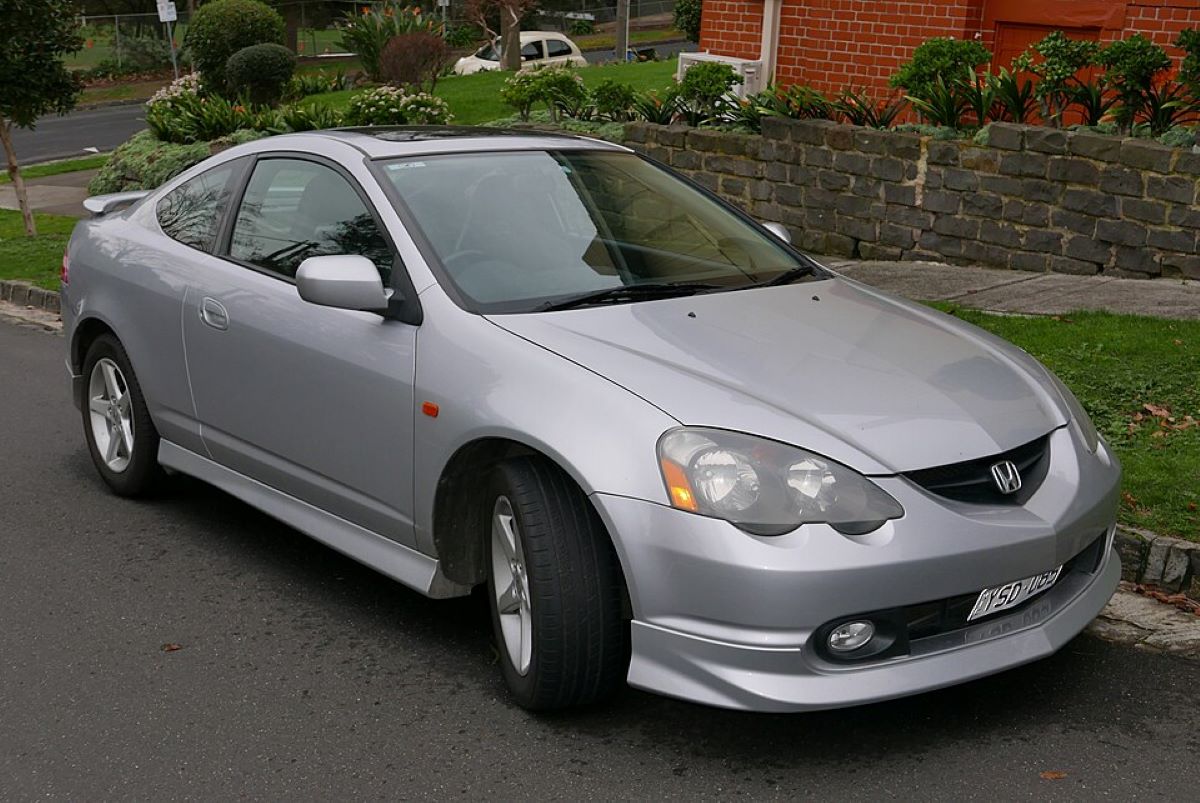
But because it’s an Acura, it doesn’t sacrifice practicality either. The 24.3 cubic feet of luggage capacity actually surpasses that of some crossovers in the same price range, and the premium seating ensures that passengers ride in comfort.
On top of that, the Integra includes a strong suite of infotainment and safety technologies, such as lane keep assist and traffic sign recognition, which enhance everyday usability when you’re not carving corners on scenic roads.
7. Honda Civic Hatchback — 24.5 cubic feet
Honda produces both sedan and hatchback variants of the Civic, but when it comes to cargo capacity, the hatchback is the clear winner. The 2025 Civic Hatchback offers 24.5 cubic feet of space behind the rear seats, and with those seats folded down, it can easily handle bulkier loads.
For 2025, Honda has made several changes to the Civic lineup, including introducing a new hybrid variant and discontinuing the previously available 1.5L turbocharged engine.
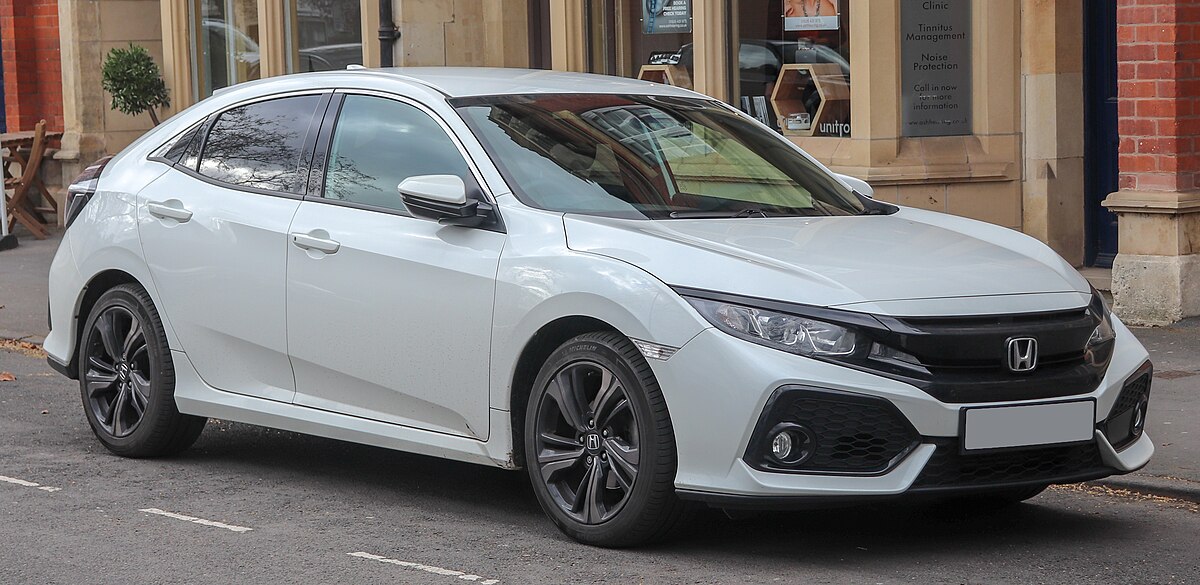
The car’s exterior also gets a subtle refresh for the new model year, including updates to the front fascia and grille. Inside, the familiar Honda cabin remains largely intact, though buyers who opt for higher trims will find some new tech features.
Affordability continues to be a major strength for the Civic, with the base trim starting at just under $28,000 before fees and the fully loaded Sport Touring Hybrid trim priced at just under $33,000 before fees.
8. Honda HR-V — 24.5 cubic feet
Matching the Civic Hatchback in terms of cargo space, the Honda HR-V provides 24.5 cubic feet of storage behind its rear seats.
The latest iteration of the HR-V arrived for the 2023 model year, presenting a refreshed version of the compact crossover that stays true to Honda’s familiar design language.
It offers practicality, ample room, and a respectable set of features much like the Civic, which serves as its platform mate. Visually, the HR-V sports a larger, more open grille compared to the Civic, though it avoids the controversial styling seen on recent models from brands like BMW or Lexus.
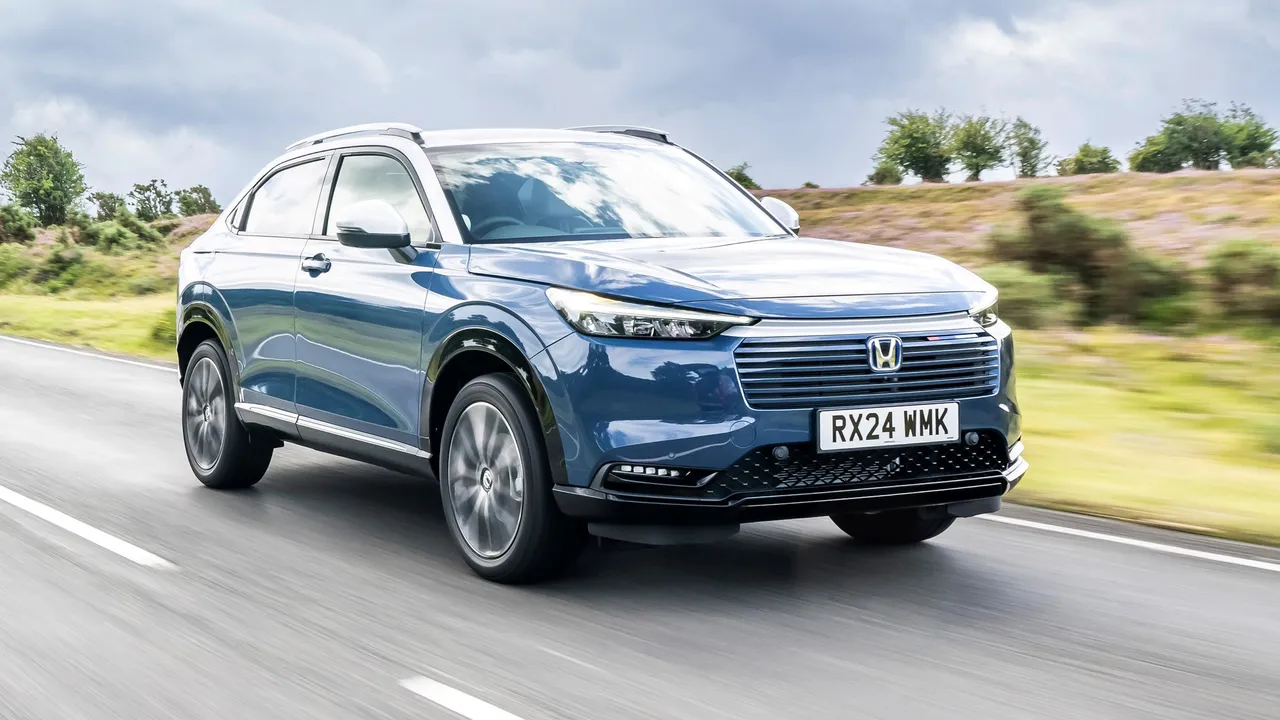
SlashGear’s review noted that the HR-V’s continuously variable transmission (CVT) was a minor drawback, especially due to its tendency to whine at highway speeds.
Still, the CVT contributed to the HR-V’s solid fuel economy and delivered smooth, if not silent, power delivery. When it comes to technology, the HR-V holds its own with a suite of infotainment and safety features that align well with competitors in its price range.
The base model starts at $25,400 before fees, with top-end trims and optional extras pushing the price beyond $30,000.
The third generation of Honda’s HR-V SUV has arrived, building on a model that first debuted in 1998 as a stylish, three-door soft-roader targeted at the surfing community. After a seven-year hiatus, the HR-V returned as a more conventional crossover.
For this latest iteration, Honda has aimed for a “bold” design, focusing on clean, simple lines and attempting to capture the silhouette of a coupe—something that’s become a popular trend in the small SUV segment. However, the result is rather underwhelming, and to give the vehicle a bit of freshness, a careful facelift has been applied.
Well, not really. If you’re up for a game of “spot the difference,” you’ll notice a few tweaks, such as updates to the front and rear lights, some adjustments to the dashboard for better ergonomics (with the aim of making the wireless phone charger more accessible, according to Honda), enhanced sound deadening, and changes to the available specifications (see the Buying tab for more details). But overall, the updates are minimal.
“Choose” is a bit of an overstatement here. With the growing demand for reduced emissions and the sharp decline in diesel popularity, Honda has made the latest HR-V available exclusively as a hybrid.
While there’s an electric version in China that can travel almost 300 miles on a single charge, in other markets, we’re left with the hybrid option.
The hybrid system pairs a 1.5-liter, 4-cylinder petrol engine (producing 129bhp and 187 lb-ft of torque) that operates on the Atkinson cycle for greater fuel efficiency with a small 1kWh battery and a clever e-CVT transmission. It’s a setup similar to that found in the Toyota C-HR.
This powertrain is best suited for a gentle driving style, with a 0-62mph time of 10.7 seconds and a top speed of 106mph. But what’s likely more important are the fuel consumption figures: 52.3 mpg and 122g/km of CO2 emissions.
Upon approaching the new HR-V, you’ll quickly realize it doesn’t appear as large or SUV-like as it seems in the pictures. In person, it’s relatively wide and quite low, to the point where you may accidentally bump your head when getting in.
The second surprise is that the interior doesn’t match the bold exterior. When it first launched, it felt as though Honda had merely enhanced the old model, and even more than three years later, it still avoids the flashy, high-tech appeal seen in rivals like the Peugeot 3008 or Hyundai Kona. For instance, the 9-inch touchscreen feels small, and its graphics look outdated.
Yes, the rear seats in the HR-V are indeed “magic”—though, unfortunately, they won’t make you richer, thinner, or more attractive. However, they do allow you to effortlessly fit bulky items in the car’s interior, thanks to the clever design that places the fuel tank under the two front seats, saving valuable space.
Additionally, there are other thoughtful touches in the cabin, such as the L-shaped “diffuser” air vents. These vents avoid blasting air directly in your face and instead create a “gentle breeze” along the side windows.
The power tailgate (available on mid-range trims and above) is also a convenient feature, offering access to a spacious boot. Just be careful not to talk to it while it’s operating, or you might confuse it and cause it to get stuck.
9. Chevrolet Trax — 25.6 cubic feet
The Chevrolet Trax is the most budget-friendly SUV in the brand’s lineup, starting at under $23,000 including destination fees. However, despite its low price tag, the 2025 Trax doesn’t give off the impression of being a basic economy vehicle.
Its styling, both inside and out, is more upscale than expected, a result of smart design choices and heavy use of components from General Motors’ extensive parts catalog.
Even more impressive is the amount of cargo space it delivers, rivaling that of more expensive crossovers.The Trax offers 25.6 cubic feet of storage behind the rear seats, which can expand to 54.1 cubic feet when the seats are folded flat.
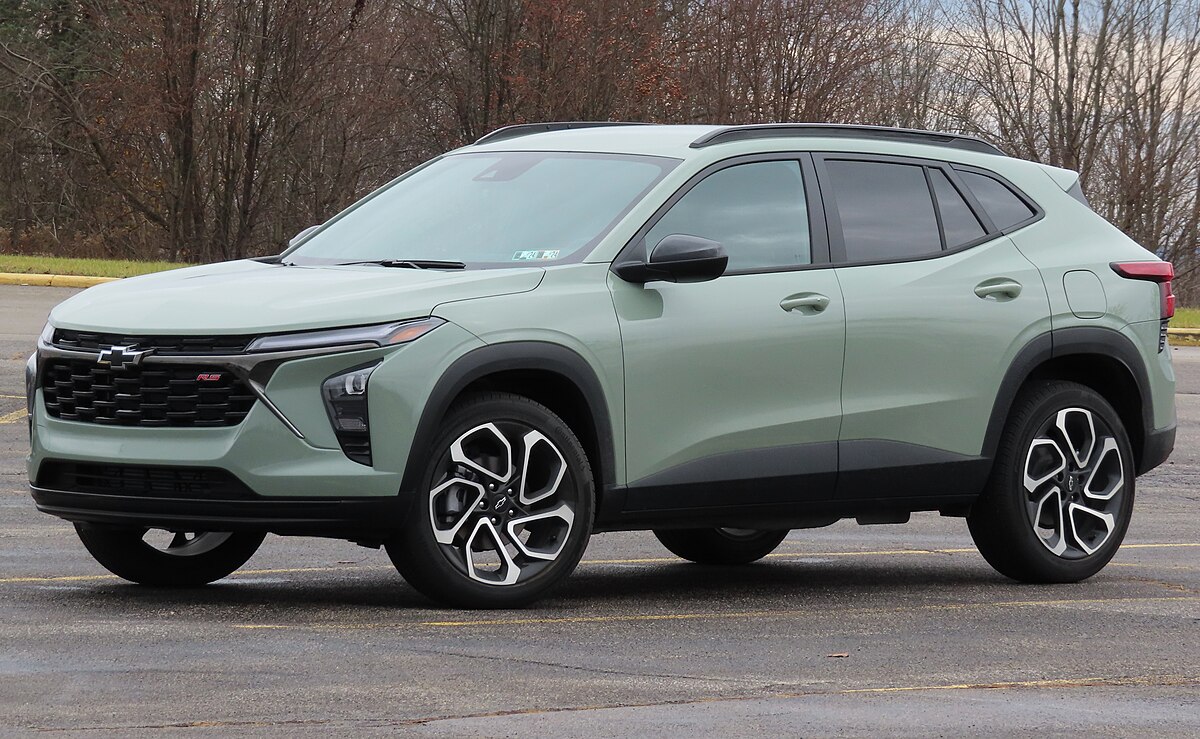
This provides plenty of flexibility for hauling bulky or awkwardly shaped items, though it’s worth noting that transporting particularly heavy loads whether inside the cabin or by trailer isn’t recommended.
Power comes from a 137-horsepower 1.2L three-cylinder engine, which performs adequately for day-to-day city driving. However, under the strain of heavier cargo, the limits of the small engine become more apparent.
The Chevy Trax strikes a good balance between useful features and affordability. The LT trim is the best option for those seeking a mix of value and practicality, featuring an 11.0-inch infotainment touchscreen and remote start as standard.
For a bit more comfort, the optional heated front seats and steering wheel are a great addition. Wireless Apple CarPlay and Android Auto also come standard on the LT and higher trims, making it easy to navigate and play music from your smartphone.
Under the hood, the Trax is powered by a 137-hp turbocharged 1.2-liter inline-three engine paired with a six-speed automatic transmission and front-wheel drive. All-wheel drive isn’t available. While the Trax accelerates with enough energy for city driving, it can feel underpowered when merging or passing on highways.
Nevertheless, the Trax’s conventional six-speed automatic is a pleasant alternative to the continuously variable transmissions (CVTs) found in many competitors. The transmission shifts smoothly without the typical drone that CVTs sometimes produce, as seen in rivals like the Honda HR-V and Subaru Crosstrek.
The Trax also offers a carlike handling experience, feeling more agile than most of its competitors. The steering is responsive, and the brake pedal is firm and reassuring underfoot, fitting the Trax’s role as a basic, practical vehicle.
When it comes to performance, the Trax took 8.8 seconds to reach 60 mph in our testing, which is slower than some rivals but still meets the reasonable expectations for the subcompact SUV class. Fuel economy is another strength, with the 2025 Trax earning EPA-estimated ratings of 28 mpg in the city and 32 mpg on the highway.
These figures are comparable to the non-turbocharged Mazda CX-30, though the CX-30 offers all-wheel drive, while the Trax is front-wheel drive. During our 75-mph highway test, the Trax achieved 30 mpg.
Inside, the Trax provides a straightforward, user-friendly layout with ample space for both the driver and passengers. The driver-facing infotainment screen and climate controls are well-positioned, and while the interior materials are basic, they are appropriate for the price point.
With the new, longer wheelbase, the Trax offers more rear legroom and additional cargo space compared to its predecessor.
The driving position is lower and more carlike, which we consider a positive change. Higher trims come with useful features like remote start, heated front seats and steering wheel, and a sunroof, enhancing the overall cabin experience.
Also Read: Top Engines That Outlived the Brands That Made Them
10. BMW X1 — 25.7 cubic feet
BMW’s smallest SUV stands out in its class for offering solid cargo space, delivering 25.7 cubic feet behind the second-row seats. Folding those seats down expands the available space to 57.2 cubic feet.
For the 2025 model year, updates to the X1 are subtle but noteworthy. Buyers can now select a panoramic moonroof as a standalone option, and heated front seats have been made available across all trim levels.
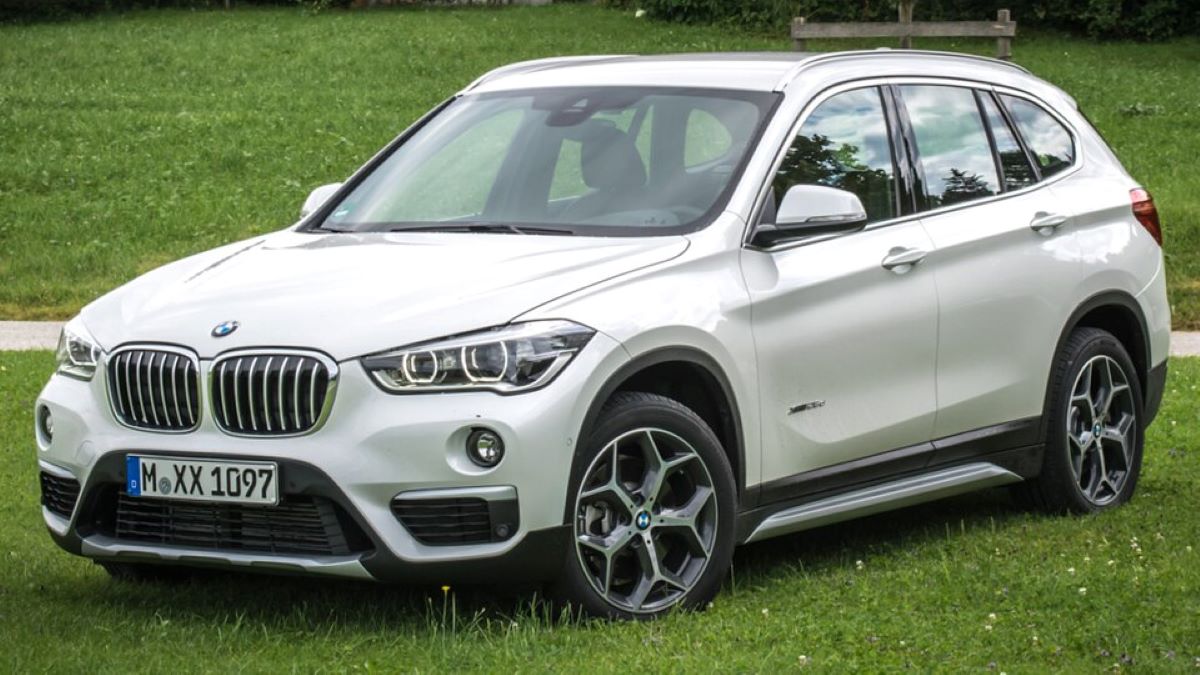
That middling rating stemmed in part from the lackluster performance of the xDrive28i model tested, as well as certain convenience features that didn’t quite work as expected.
For instance, the reviewer criticized the slow responsiveness of the start/stop function, and noted that Sport mode failed to noticeably enhance the driving dynamics.
While the X1 has its drawbacks, its cargo capacity is certainly not one of them in that regard, it competes well within its segment.
The 2025 BMW X1 is the smallest and most affordable SUV in BMW’s extensive lineup. While the X2 offers a sportier, sleeker design, and the X3 provides more space, the X1 stands out as an excellent option for those seeking a compact, stylish vehicle that’s great for daily commuting.
This latest generation of the X1 is slightly larger than its predecessor, yet it retains a lifted hatchback style that appeals to many. For 2025, BMW has made minor updates, including the addition of standard heated seats and some changes to the available packages, which enhance the vehicle’s appeal.
The X1 delivers plenty of features for a smaller SUV, with roomier seating and a broad range of available high-tech amenities. It also impresses with quick acceleration and sporty handling.
However, it’s not without its flaws. The transmission can occasionally be slow to downshift when needed, and the engine stop-start system feels rough. Additionally, some of the optional packages can be quite expensive.
Cost-wise, the 2025 X1 offers a competitive advantage in its class. It’s a notable improvement over the previous generation, offering a more enjoyable driving experience, a range of impressive in-cabin technology typically found in more expensive vehicles, and a sportier edge, especially with the introduction of the M35i xDrive model last year.
This sportier model shares the same turbocharged 2.0-liter four-cylinder engine as the base X1 but has been enhanced to deliver 312 horsepower and 295 lb-ft of torque. As a result, it’s one of the quickest in its class, providing a strong alternative to larger and more expensive options.
When compared to rivals in the compact luxury SUV market, the X1 competes with the Mercedes-Benz GLA and GLB. While both offer a premium experience, they lack the same level of refinement as the X1.
Another strong competitor is the Volvo XC40, which excels in luxury and comfort but doesn’t match the X1’s engaging driving dynamics. Whether you prioritize performance, comfort, or advanced technology, the 2025 BMW X1 is a solid option in a crowded market.
11. Kia Seltos — 26.6 cubic feet
Throughout much of its lineup, Kia has built a reputation for offering standout interiors with high-quality finishes. While the Seltos doesn’t quite reach the same heights as some of its siblings in that area, it excels in other key categories.
The newly refreshed Seltos provides impressive space for a vehicle in its class, including 26.6 cubic feet of storage behind the rear seats, and up to 62.8 cubic feet with those seats folded flat.
The rear seatbacks also fold in a 60/40 split, giving owners added flexibility when it comes to configuring the interior.
Standard all-wheel drive adds to the appeal, and the Seltos is loaded with the kind of tech and safety features that have come to define Kia’s value proposition.
As usual, the most feature-rich experience comes with higher trims, which are priced accordingly. Still, for buyers on a budget, the base version represents a solid, capable SUV choice, with starting prices just under $26,000 including destination fees.
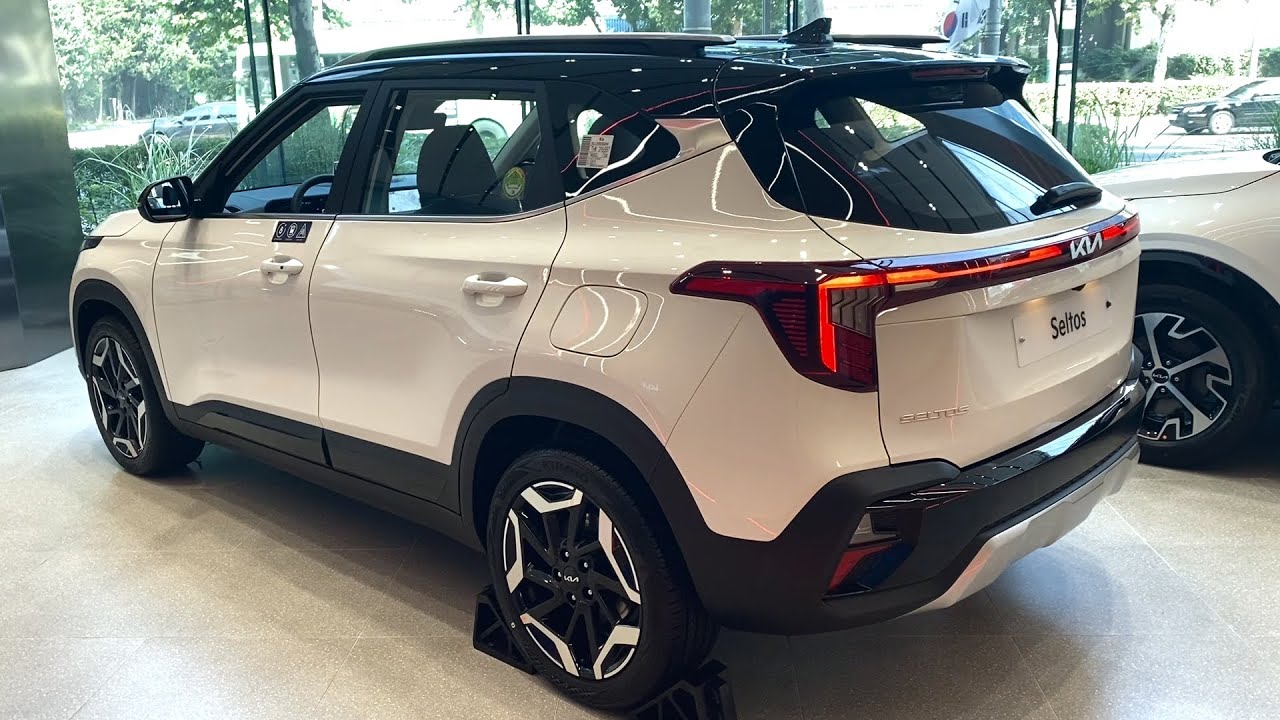
The 2025 Kia Seltos S (FWD) is a front-wheel drive, 4-door wagon that was launched in the Australian market on May 3, 2024, and is classified as the SP2 PE MY25. Manufactured in Korea, the Kia Seltos is considered a small SUV, with a starting price of $29,850 before on-road costs.
Under the hood, the Kia Seltos S (FWD) is equipped with a 2.0L engine that produces 110 kW of power at 6200 rpm and 180 Nm of torque at 4500 rpm, paired with a Continuously Variable Transmission (CVT). Kia claims that the Seltos S (FWD) achieves a fuel consumption of 6.9L/100km in a combined city and highway cycle, emitting 157g of CO2.
In terms of dimensions, the Kia Seltos stands at 1630mm (64.2 inches) in height, 4385mm (172.6 inches) in length, and 1800mm (70.9 inches) in width, with a wheelbase of 2630mm (103.5 inches).
The unladen weight of the vehicle is 1375kg (3031.4 lbs). The Seltos S (FWD) is fitted with 205/60 R16 92H tyres at both the front and rear. Routine servicing is required every 12 months or 15,000 km, whichever comes first, and it is backed by an 84-month, unlimited-km warranty.
The 2025 Kia Seltos S (FWD) offers a ground clearance of 170mm, with a towing capacity of 1100kg when braked and 600kg unbraked. It has a final gear ratio of 6.052.
12. Volkswagen Taos FWD — 27.9 cubic feet
In the crowded compact SUV space, SlashGear’s reviewer found the Volkswagen Taos to fall a bit short in terms of overall value.
The engine is less powerful than some rivals, parts of the interior feel a bit low-rent, and the driving refinement isn’t quite up to par.
That said, it remains competitively priced, and for those prioritizing cargo space, the front-wheel drive version of the Taos is particularly attractive.
The front-drive Taos offers 27.9 cubic feet of room behind the rear seats. However, opting for all-wheel drive drops that figure to 24.9 cubic feet.
The same pattern follows when the seats are folded: the FWD model opens up to 65.9 cubic feet, while the AWD variant offers 60.2 cubic feet.
For buyers who see AWD as non-negotiable, competitors like the Kia Seltos might be better suited, offering slightly more space while maintaining similarly modest engine performance.
Soon after Volkswagen launched its Taos subcompact SUV, a recall was issued for its all-wheel-drive powertrain due to a faulty control unit.
This led the automaker to temporarily withhold the AWD model while they focused on getting the front-wheel-drive versions onto the market. Now that the issue has been resolved, we’ve had the opportunity to test the 2023 Volkswagen Taos AWD, both on the track and in daily driving conditions.
Volkswagen designed the Taos to straddle the subcompact and compact SUV segments, positioning it as a potential alternative to vehicles from either category. While the Taos holds a solid mid-pack position, it doesn’t stand out as a leader in the class.
In our previous experiences with the front-wheel-drive (FWD) Taos, we found it to be a solid choice with good driving dynamics, impressive fuel economy, and ample interior space.
However, the value proposition was lacking, as the higher-end trims didn’t offer features or performance that justified their steep price tags.
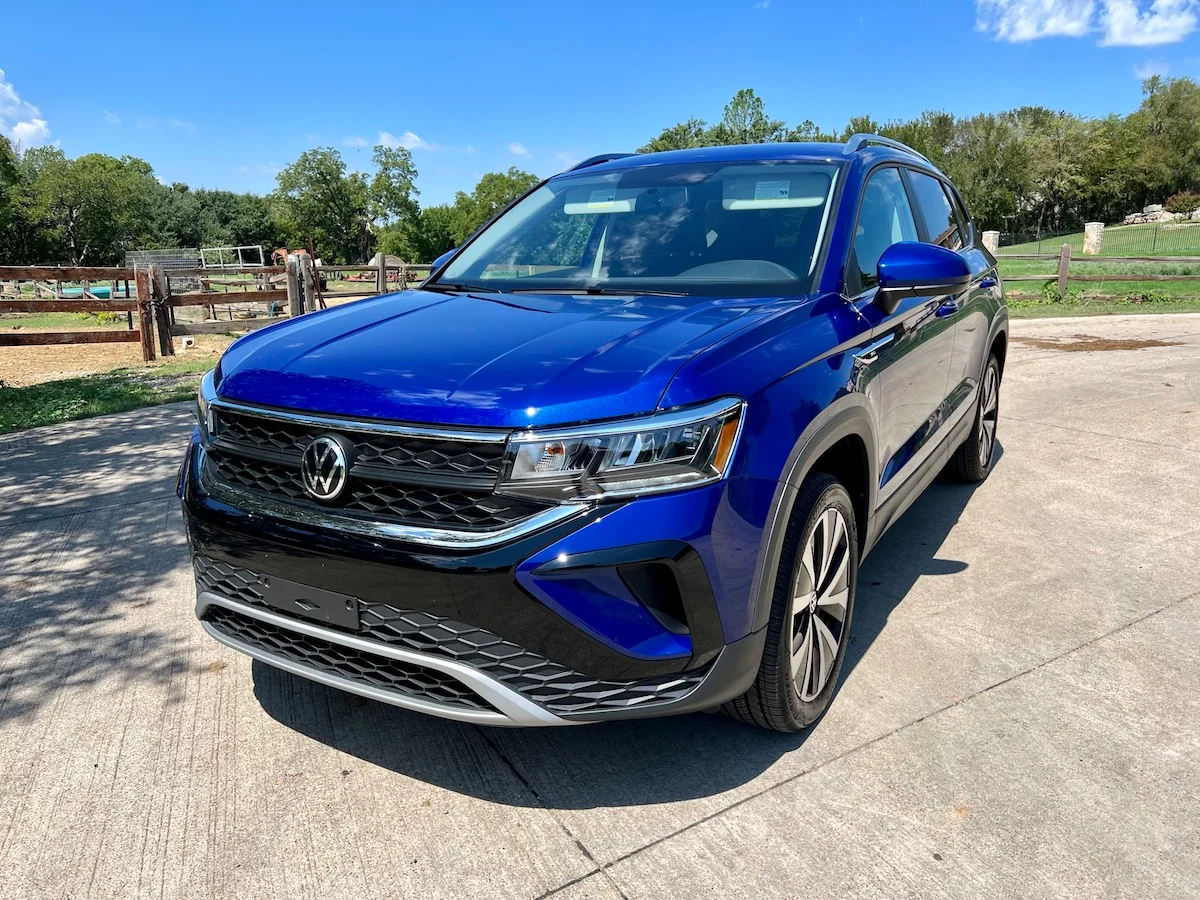
Every Taos is equipped with a 1.5-liter turbocharged I-4 engine, producing 158 horsepower and 184 lb-ft of torque. However, the mechanical differences between the FWD and AWD models significantly alter their driving experiences. The FWD version features a twist-beam rear suspension and an eight-speed conventional automatic transmission. In contrast, the AWD model has an independently suspended rear axle and a seven-speed dual-clutch automatic transmission.
Our testing reveals that the Taos AWD offers some performance advantages over its FWD counterpart, but these differences are minimal and don’t make up for its rough behavior on the road.
Dual-clutch transmissions, commonly found in performance-oriented vehicles like the Chevrolet Corvette and Volkswagen’s own GTI, are prized for their near-instantaneous shifts. We were surprised to find this feature in the Taos.
Activating launch control requires disabling stability control, selecting the Sport drive mode, engaging S transmission programming, and then pressing both the brake and gas pedals. A checkered flag appears in the gauge cluster as revs hold at 1,900 rpm.
Releasing the brake causes the Taos to surge forward, reaching 60 mph in 7.4 seconds—just a slight improvement over the FWD model’s 7.6-second result. That 0.2-second difference is consistent through the quarter-mile, which arrives in 15.7 seconds at 87.4 mph.
In the figure-eight handling test, the AWD’s fully independent suspension yielded a lap time of 27.2 seconds at an average of 0.62 g, over a second quicker than the FWD version. The AWD model also demonstrated better grip on the skidpad, with an average of 0.85 g compared to the FWD’s 0.82 g.
These performance results are acceptable for a small SUV but aren’t particularly impressive compared to other competitors. In fact, when driving on the road, we found the FWD version of the Taos to be more enjoyable to drive than its AWD counterpart.
Volkswagen has used dual-clutch transmissions (known as DSG) in passenger vehicles for a long time, and they typically perform well. Unfortunately, the DSG in the Taos AWD fails to meet expectations, often faltering during everyday driving.
While we didn’t experience the severe delayed departures that were present in early-build models, the transmission’s lack of refinement was still a major issue. The clutch engagement when pulling away from a stop was inconsistent, sometimes smooth and other times abrupt.

